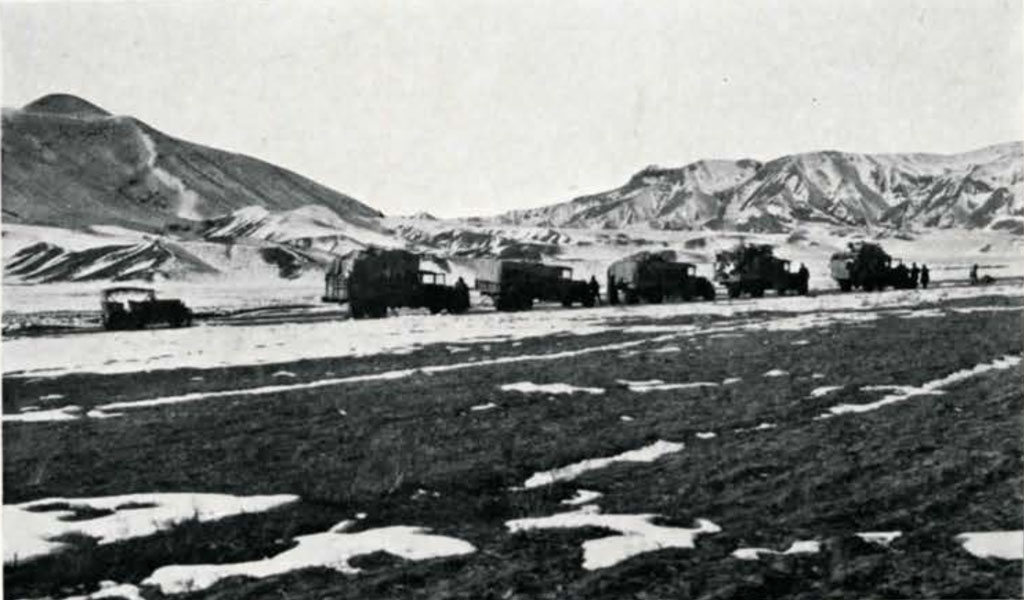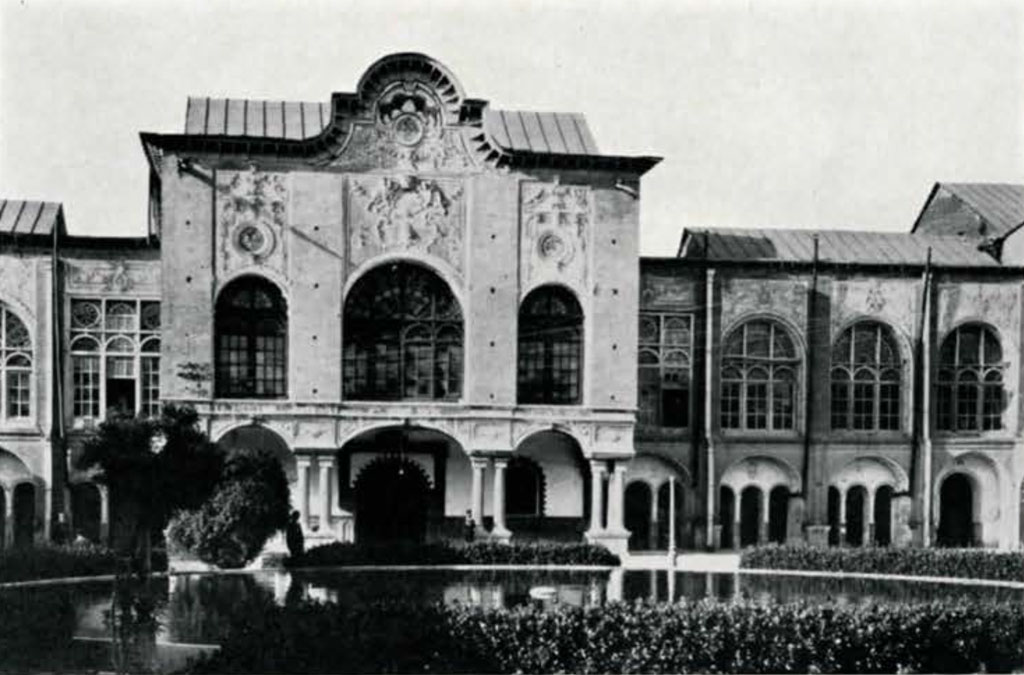Time had erased the memory of the dead towns of Tepe Hissar. About three and a half millennia after the mound had closed over the last Hissar III settlement, the hill crust broke under the tools of our laborers. In the excavation squares the ruined houses and the graves of their former occupants emerged again, illuminating by their contents the material achievements and the development in ancient northeast Iran within an era of, roughly speaking, fifteen hundred years or more. The contemporaneous culture epochs in Mesopotamia extended from the Early Sumerians to early Kassite times, while in Anatolia the periods from the Red Pottery Age to the crystallization of the Hittite empire correspond to the occupation of Tepe Hissar insofar as determined. The work of the 1932 season expanded the era of Tepe Hissar occupation into remoter antiquity, as suggested in the chapter on Hissar I pottery.
Scientifically, the principal result of the first season was establishing a chronological framework consisting of a number of objects and traits which are characteristic of the successive culture strata of Tepe Hissar. We are briefly summarizing these features.
Stratum I, sounded in platforms which crop out from below the later deposits, is mainly characterized by wheel-made, painted pottery, decorated with simple geometrical patterns or with conventionalized animal designs representing ibexes, gazelles, felines, and the like. A vessel and sherds of a more primitive character than the bulk of the Hissar I ceramics appeared at the deepest level of the excavation, which had not yet struck virgin soil at any point of the mound during the first season.9

Image Number: 83111
Copper pins and daggers of certain forms, in addition to points, indicate that Period I already belongs to the Age of Metal. Many stone objects were still in use, but their proportion does not perceptibly surpass that of the corresponding stone implements of the later strata.
Great numbers of seals or seal-shaped ornaments with simple geometrical patterns or, in one instance, with an elaborate pattern of persons and animals, are characteristic for Stratum I. Frit occurs already during this early period.
Animal figurines of baked and unbaked clay are frequent in all strata. In the deposit under consideration, some exceptionally large and painted specimens occur.
The spindle whorls of Period I have the shape of perforated miniature cups. Laterally perforated pottery disks seem also to be typical for this time.
Incredible numbers of small gypsum and frit beads were strung around necks, arms and hips of the Hissar I people, the very quantity of these ornaments being a characteristic feature of this period.
The dead of all Hissar periods were disposed of with contracted legs. In addition, the burial custom of Hissar I insisted on having the faces of the dead look towards the right side, though no definite orientation of the bodies was noticed.
The end of Period I we ascribe to the arrival of the foreign Hissar H invaders, whose former dwelling places we traced towards the northern steppes.
The gray pottery of the foreigners displaces the painted ware of the indigenes, but mutual absorption of ceramic traits is indicated by the fact that Period I forms persist though the decoration disappears. Decorated vessels of the last Hissar I people were found side by side with the gray pots of the foreigners in the same graves. Footed jars, bowls and goblets, gray and wheel-made, are the typical vessels of Hissar II.
In metal work Hissar II excels over Hissar I. We illustrated the guide specimens, such as a well-wrought copper mace head, double scrolls and loops, thick-stemmed nails with broad concave heads, and bracelets and anklets of coiled copper wire, a type occurring in Stratum III, as well. Silver and lead objects appear first in Stratum II. Large copper stamp seals with the omnipresent filled cross as sealing pattern, are also not known prior to Hissar II. Mountain crystal, lapis lazuli, and carnelian are new materials for personal adornment almost as abundant as that of the past period.
The Hissar II people had no characteristic burial customs. The contracted skeletons lay, as usually, below the floor of the occupational level, in plain earth, seldom in mud brick cists.
Period III, we believe, grew out of Period II, and was, in addition, influenced by foreign, particularly by western, culture traits. We tentatively attribute this last prehistoric epoch of Tepe Hissar, to the first half of the second millennium B.C. It may be somewhat earlier but hardly later due to the absence of iron objects, a fact which was considered above in the introductory chapter of Hissar III.
Elaborations of many culture features of the preceding periods in addition to new traits characterize Period III. Copper weapons, tools and vessels, such as the long bidents, the spear or lance heads, the hollow chisel, the mattocks and the large bowls surpass by far the products of Period II workmanship. Silver vessels, too, were only noticed in Stratum III. Exquisitely modeled vessels of alabaster and other stone appear first in this stratum. The copper seals show elaborate patterns, while seal cylinders indicate connections with the west.
Certain series of animal figurines are little works of art, in several instances faithfully picturing the originals. The representations of human beings, such as female effigies, were found, so far, only in Stratum III. Wands of copper are equally characteristic of this time. Well shaped ornaments of attractive materials displace the quantities of rather simple beads of the preceding periods. While simple frit occurred previously in form of beads, vessels of this material are an achievement of Hissar III. Nevertheless, the same or slightly modified series of common clay, stone, or copper objects occur, and the pottery vessels seem actually to be more primitive as to technique than the vessels of the preceding strata. Bottle pitchers, canteens, vase cups, and braziers are guide forms of this time. Again, the lavish mortuary equipment of certain graves strikingly contrasts with the simple mortuary furniture of most burials, and suggests the existence of dominant social castes, not suggested to such an extent by the remains of the former occupants of the site. Architectural remains uncovered in 1932 reflected social distinctions in a similar manner. It is interesting to note the occurrence of Mongoloid crania in Stratum III.

The abrupt end of Period III, and of the prehistoric occupation of Tepe Hissar in general, was due, we assume, to an epidemic, destroying part of the population and forcing the rest to search for new homes.
We have to add here a few words concerning the theories of Sumerian origin and their postulated migration. It is assumed that the Sumerians settled in the Two River Country during the fourth millennium. Judging from archaeological criteria, they found there a sedentary population which they gradually absorbed and displaced. The indigenes used painted pottery with forms quite distinct from the undecorated Sumerian vessels.
The early phase of the Painted Pottery Age of Tepe Hissar, characterized by rather primitive decorated ware, corresponds approximately to the time of the appearance of the Sumerians in Mesopotamia. It is clear, therefore, that the advanced Sumerians had no culture relations whatsoever with the illiterate population of the Tepe Hissar district nor, to go a step farther, with the regions north of the mountains, in the Turkoman Steppe, where conditions seem to be similar to those of the Tepe Hissar region. Neither do we believe that the Sumerians ever touched these districts on their postulated migration. Not until the last prehistoric culture period, Hissar III, do we notice definite relations with the West, but there seems to be no doubt that then the western culture zone was the focus of diffusion.
None of the first great empires of ancient Iran left their traces on Tepe Hissar. Other sites of the region may have been inhabited during the times of the Medes, the Achaemenians and the Parthians. One of the capitals of the latter period, Hecatompylos, is supposedly situated in the Damghan plain, though certain authors place it farther east.
Finally, in the beginning of the Sasanian period, roughly two thousand years after the end of Hissar III, a small palace of a Sasanian noble rose on the marginal debris of the ancient Tepe Hissar towns. The main section of the building was impressively decorated with gypsum plaques showing human busts, animals, and abstract patterns, situated mainly in the entrance hall where columns with attractive stucco work carried ornamented arches and archivolts. Lions of gypsum guarded the entrance to the main room, and many friezes, door arches and other architectural units with attractive floral or geometrical designs lay in the debris of the palace, which in addition had been ornamented with polychrome murals. The Sasanian palace lasted a few generations at the most. When the Islamic wave struck the Damghan region, the impressive building had presumably crumbled, the debris protecting the remnants of its former splendor.
The Balance of Season 1931
Balancing critically the aims of the expedition as stated in the initial chapter of this report with the results summarized above, we consider the first season’s task at Tepe Hissar accomplished, whereas we debit ourselves with the second phase of the expedition’s activities, namely, exploratory work and, mainly, the identification of Hecatompylos. We shall later report to what extent the second season squared the accounts in these respects. There was a faint chance that the tests of the Damghan Citadel and of Tepe Muman would produce pre-Islamic remains. They did not.
Our failure in expanding the activities of the expedition farther afield was due to the obviously essential concentration on the focal point, namely, Tepe Hissar, to the lack of an accurate map of the region, and to the general ignorance as to the ceramics of the periods between the gray ware of Hissar III and the glazed wares of the Islamic epoch.
It is clear that much remained at Tepe Hissar requiring our principal attention during the work to come. But, in addition, the two principal clues for the systematic archaeological exploration of the environment are now in our hands: the archaeological map of the Damghan Region, which was finished in late fall, and our knowledge of the ceramics. In the Damghan district, there was no glazed pottery of any account prior to the Islamic era. Red wheel-made pottery is characteristic of the Sasanian epoch and similar ware presumably also for Parthian deposits.

